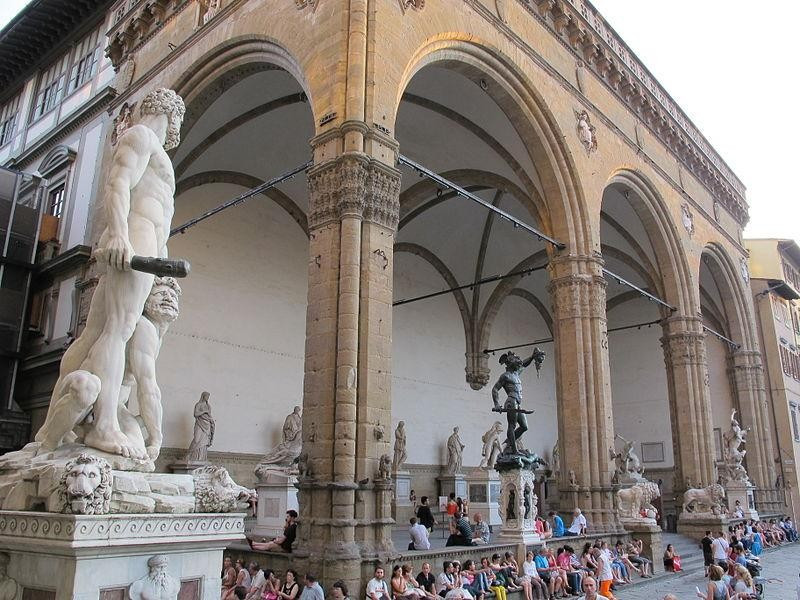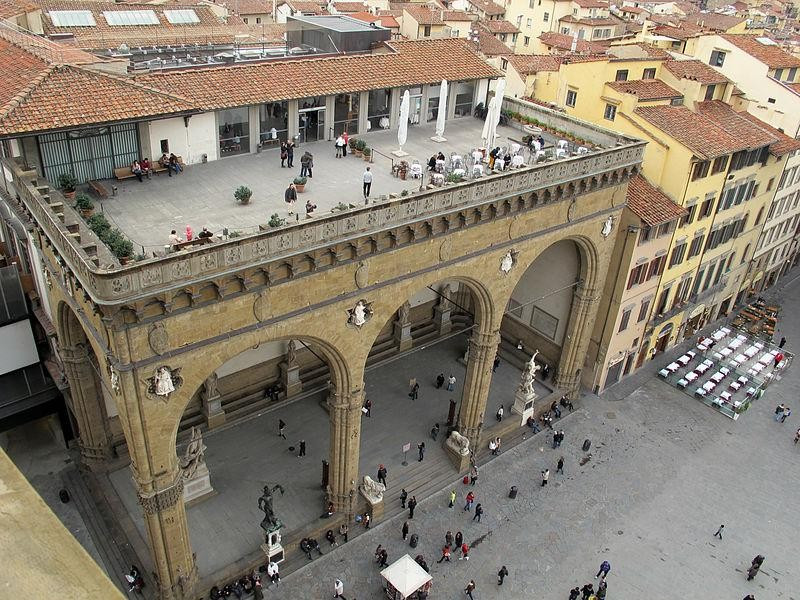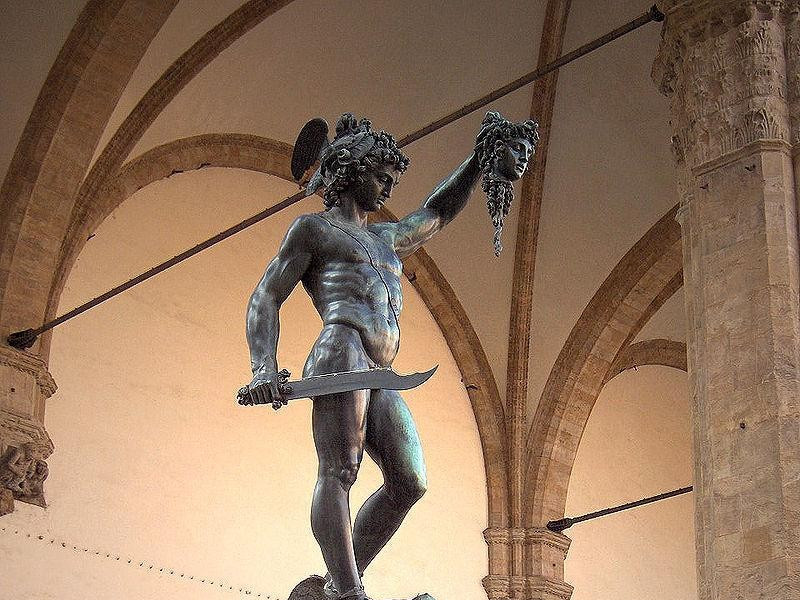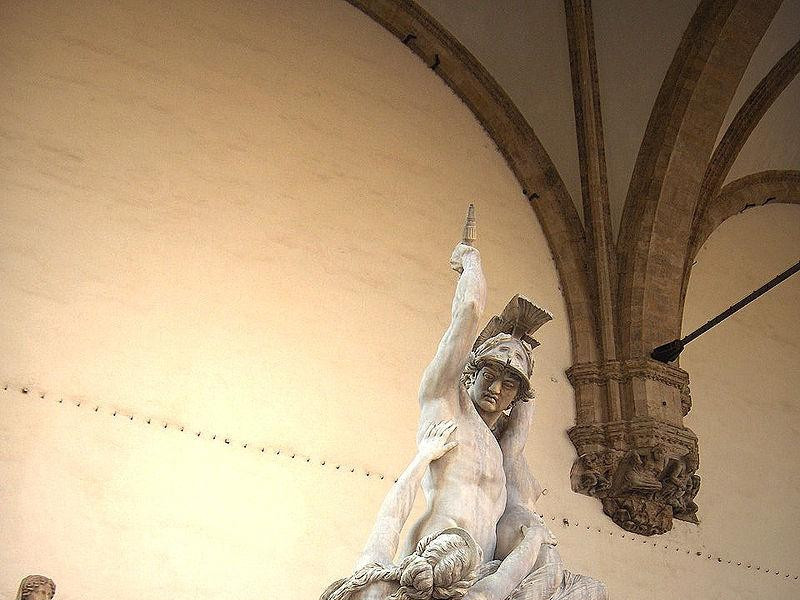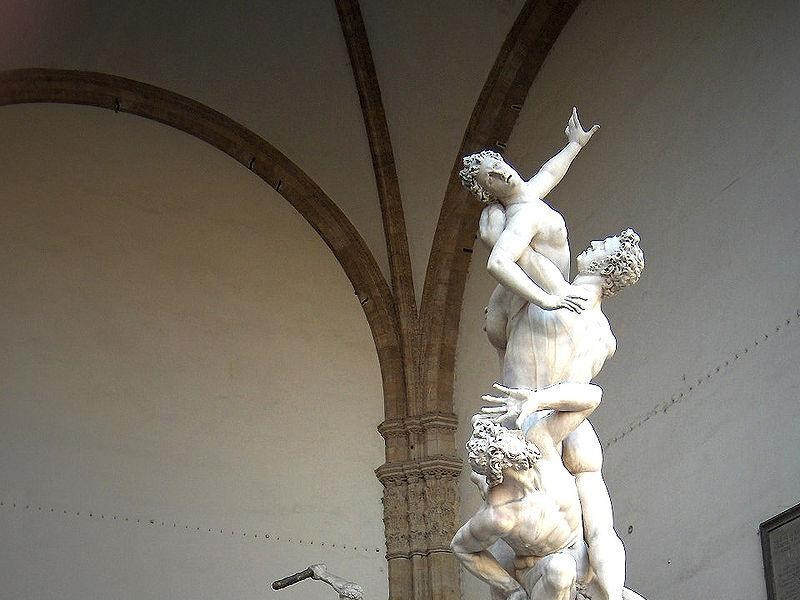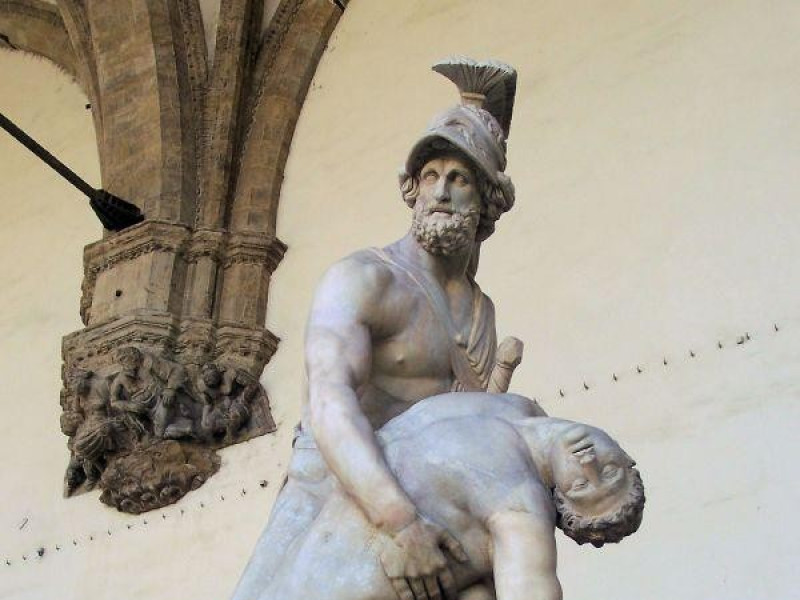Loggia dei Lanzi
The Loggia dei Lanzi (or della Signoria) - also called Loggia dell'Orcagna because of misallocations to Andrea di Cione, known as Orcagna, as is the work by his brother Benci and Simone Talenti - is located in Piazza della Signoria, the right of Palazzo Vecchio, beside the Uffizi. The building dates back to the period between 1376 and 1382, and was used to house indoor numerous popular public assemblies and the official ceremonies of the Florentine Republic. Although it is a Gothic building, the presence of arches is the Renaissance style that inspired Filippo Brunelleschi in the Spedale degli Innocenti, in Santissima Annunziata Square. Starting from '500, with the creation of the Grand Duchy of Tuscany, this space was intended to accommodate some sculptural masterpieces: unique in the world, in the three arches are still housed sculptures of exceptional value dating back to the period of the Classical and Mannerism, true masterpieces freely accessible and free day and night. On either side of the staircase entrance two marble lions, one Roman and the other of 1600, designed by Flaminio Vacca, to symbolize the guard and protection of places to negative appearances. The most important work is the masterpiece "Perseus" by Benvenuto Cellini, a large bronze statue of 3,20 meters high, including the pedestal stained with bas-reliefs of mythological theme, coil well-proportioned body and plastic position, leaning on one leg while raising his left arm with the head of Medusa. Giambologna's works, the "Rape of the Sabine Women" (1583) and "Hercules with the Centaur Nessus" (1599), are sensational effect of motion expressed by bodies live. Are sculptures from Roman period "Menelaus and Patroclus", copy of a Greek original (230-240 BC) and the six female figures close to the back wall, which are believed to come from the Forum of Trajan in Rome, found in the mid-sixteenth century. Instead, the nineteenth-century work "The Rape of Polyxena", by Pio Fedi.

